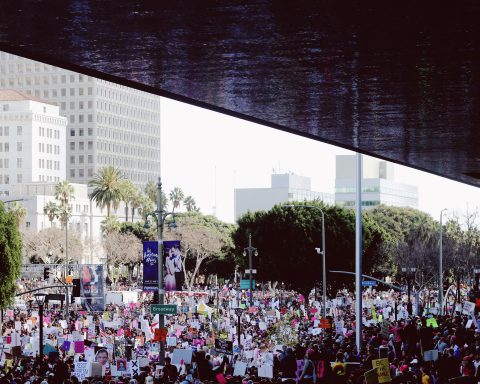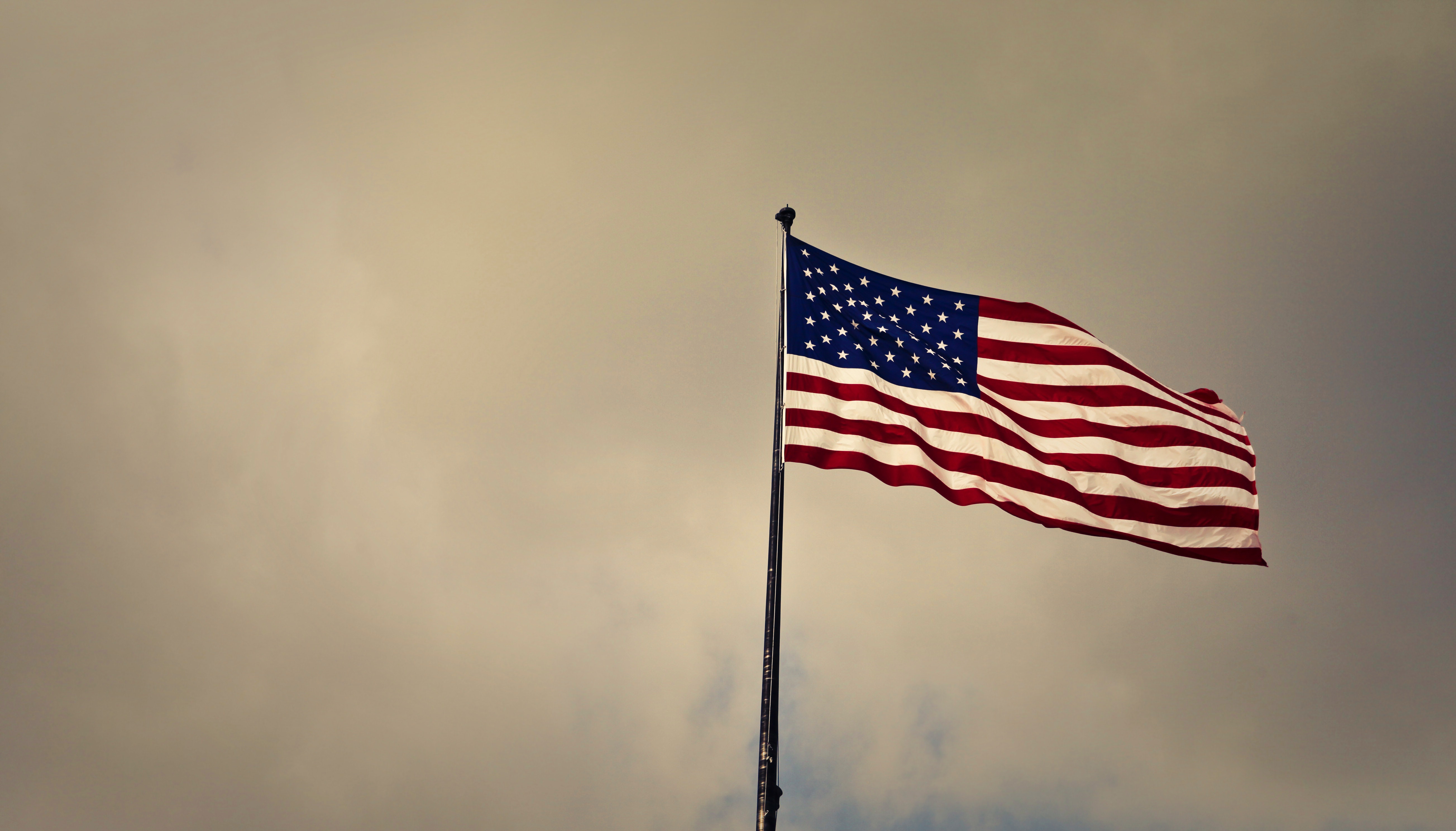Past and Future Measures to Challenge Coercive Sexism.

An earlier piece by Managing Editor Henry Koenig Stone addressed the call of Christians to engage individually with the MeToo movement and fight to reduce sexual harassment and abuse in the United States through critical self-awareness: “Choosing Vulnerability in the Wake of #MeToo.”
This follow-up is less personal because, given the overwhelming number of influential male voices being outed as harassers, it is clear that we must discuss institutional as well as personal change. We also respond in part to Leslie Scanlon’s “#MeToo, silence and the church,” a piece which suggests that (“Choosing Vulnerability” notwithstanding) the church has been largely silent on the issue. Scanlon, with justifiable skepticism, asks: “Is there space in this church for me to be real, to be honest and whole?” Unbound now responds: if there is not, then it is long past time to carve out the space for this conversation in our sermons, in our congregational dialogues, and in our public witness as a national church.
___________________________________________
It is long past time to carve out the space for this conversation in our sermons, in our congregational dialogues, and in our public witness as a national church.
___________________________________________
The first step is to take stock of where the church has been on the issues of sexual harassment, abuse, and the silenced voices of survivors. Looking back, we have identified some policies that may well have restrained harassment in the Presbyterian Church (U.S.A.), and perhaps similarly in other mainline denominations—these foundations are listed below, under “A History of (Limited) Progress.”
The second step is much harder, and not something to be accomplished in a thousand words or fewer: energetic young mainline Christians must take the reins and build new institutional frameworks for resisting the insidious reach of coercive sexism. (We say “mainline” because many self-proclaimed “evangelical” Christians have a little (Roy) Moore work to do to salvage their credibility on this issue.) This article concludes with some “Steps for Action” along these lines.
A History of (Limited) Progress
Back in the late 1960’s, there was some trepidation regarding “sex, drugs, and rock’n’roll” that was reflected in the 1970 report, Sexuality and the Human Community. Honesty was opening up the Presbyterian Church; its gradual acceptance of divorce, even for ministers (see the work of James G. Emerson, Divorce, Remarriage, and the Church), as well as its support for contraception and for safe, legal abortion, were parts of this process.
Larger than these trends, however, was God’s call to women to become ministers, a call that was recognized earliest in the Reformed and “Free” churches such as the PCUSA in 1956. The treatment of the increasing number of women ministers in the 1970’s, in seminaries as well as congregations, contained many test-cases of boundary violations. These experiences informed the sexual harassment policies of the early 1980’s.
Following up the 1970 report on sexuality, the Advisory Council on Church & Society (ACCS) appointed a team that produced the study Dignity & Exploitation in 1974. Written by the Chaplain at Smith College, it addresses sex education, privacy, free speech and obscenity laws, artistic freedom, and the “Women’s Movement.” It based its ethics of equal human dignity on the Biblical themes of the “Image of God,” Love, and Covenant. It called for laws for protection, not repression, and also noted the limits of law in influencing culture.
At the same time, the ecumenical churches were looking at the commercialization of sex in the culture. The Interfaith Center on Corporate Responsibility (ICCR) held hearings in 1976 that became the booklet Images of Women in Advertising (1977). Chaired by Pat Young, a longtime leader in Presbyterian Women, these hearings spent some time on the possible violent and abusive impacts of media imagery, but looked mainly at the corporate molding of human needs (as in the recent TV series Mad Men). One of the sharper statements came from theologian Dorothee Soelle:
“The purpose of advertising today is not only to sell products, but also to sell selling. Because human beings are not yet psychically ready for total capitalism, they have to be shaped into living lives in which buying, selling and saving are primary values.
According to the traditional role-split, man is seen as the producer, woman as the consumer. Women become, therefore, the special victims of this new type of education. Before woman was sold; now she is both buyer and product…” (p. 19).
In 2017, how much are the harassers and abusers similarly conditioned by a culture that makes both women and sexuality into commodities to be “used” or “consumed” by those with the unaccountable power to do so?

By 1978—the same year homosexual persons were denied ordination but recognized as full members of the church—the General Assembly asked the Council on Women and the Church to “study the problems of sexual harassment…” That study defined sexual harassment as: “Any unwanted sexual advances or demands (verbal/physical) which are perceived by the recipient as demeaning, intimidating or coercive.” The report, Naming the Unnamed: Sexual Harassment in the Church (1982), drew on survey data from the Research Services unit. It developed an understanding of mutuality and power that recognized the need for procedures to compensate for the higher organizational positions of most abusers. (This suspicion of unaccountable power was shown in 2014 in a resolution to take challenges to sexual violence in the military out of the chain of command to prevent retaliation: Sexual Violence in the U.S. Military: A Human Rights Update.)
In 1986, the Assembly adopted a report, Violations Against the Image of God, that looked particularly at exploitation of women overseas through prostitution and trafficking, and cited a Code of Ethics for Tourists, first developed by the Christian Conference of Asia in 1975. This report looked at various forms of commodification and violent abuse, including rape of political prisoners. (The Advocacy Committee on Women’s Concerns (ACWC) did several reports on prostitution in the United States and overseas, seeking less moralistic punishment and denial and more prevention and rehabilitation.)
The issue of harassment and abuse was taken on directly again in 1995 in the study, Hearing the Silence, Healing the Pain: Stories of Professional Misconduct Through Sexual Abuse in the Church, reprinted in 1999. This resource reflects thinking by Marie Fortune and others on sexual violence, addiction, “soul stealing,” and the sexual abuse of children, boys, and men as well as women. It identified the profound wounding and re-victimization dynamics being expressed today in the MeToo movement.
Some have argued that the churches tried to ignore the sexual revolution and the widespread patterns of experimentation and living together before marriage. Focusing official attention on homosexuality or abortion has, in this view, served as a distraction from basic male/female relations. An effort to re-frame those relations, Keeping Body and Soul Together (1991), was rejected by the General Assembly, both for being too affirming of GLBT persons, and for its form of holistic liberation theology. (Though not adopted, by popular demand it was published and circulated).
Domestic violence was addressed by the General Assembly in 2001 in the report Turn Mourning into Dancing!, which was accompanied by program support and resources through the then staff of PHEWA, the Presbyterian Health, Education, and Welfare Association.
The situation and nature of the family overall was addressed in the 2004 Transforming Families report, which looked particularly at the impacts having both parents work within an increasingly unequal economy. This study helps one understand the economic pressures that push many women to put up with harassment in order to keep even ill-paid jobs.
In terms of the PC(USA) staff culture, it has perhaps helped that women have also been somewhat empowered in denominational hiring practices (women have headed a significant percentage of departments in the PMA, as well as the Agency itself).
___________________________________________
Whether with the ordination of women, the ordination of LGBTQ Christians, or—finally—the legalization of same-sex marriage, each has flipped within a given generation of young adult social witness.
___________________________________________
Today we at least have procedures and, for ministers and professional church workers, some processes of accountability for sexual misconduct. Here are some legal resources from the PMA, and here we compile other resources related to healing, recovery & rebuilding trust; creating safe ministries; and raising awareness of these issues.
Steps for Action
We have listed studies, initiatives, and work done over several decades. In the current context of so many stories of vile behavior, perhaps the obvious response is: “So what? Coercive sexism seems dominant, pervasive, and immutable—in the church as well as in broader society.” But now, with #MeToo we see a brave energy calling out sexual harassment which defies prior assumptions about social focus and change.
Whether with the ordination of women, the ordination of LGBTQ Christians, or—finally—the legalization of same-sex marriage, each has flipped within a given generation of young adult social witness.
___________________________________________
The alternative is to let 80% of white “evangelicals”—who, in Alabama, showed they will vote for an alleged child molester over a candidate labelled “progressive”—poison the public perception of our faith.
___________________________________________
How much have these struggles in the churches influenced the broader culture? How different is the social momentum of sexual harassment revulsion today and the “mainline/evangelical” split in relation to it? It seems to us very important for younger Christians to be very clear that mainline churches have tried to address this insidious behavior for a long time. As in the resources listed here, these churches try to listen to women’s voices. It is time to make that listening very apparent in our public witness. The alternative is to let 80% of white “evangelicals”—who, in Alabama, showed they will vote for an alleged child molester over a candidate labelled “progressive”—poison the public perception of our faith.
We male editors look to our sisters and non-binary siblings to lead the way, but know a few things that we must do together:
- Shape the terms of the discussion in the public arena. The #MeToo campaign must be one of many such efforts.
- Keep the Church itself accountable, and hence able to witness with integrity.
- Come to the table as actions are discussed—at local and presbytery meetings, at the General Assembly next year, and closer to home, and wherever value arguments are made about sexual misconduct and its consequences.
- Question the status quo based on the lessons of the past: If the accountability structures in our denominations have worked, how do those learnings translate to the public arena? If the Presbyterian Church and others have, in fact, not been doing enough training, program, or witness to protect women, and to lift up equal human dignity, then we need to ask, why not?
Thoughtful Christians know that sexuality is always complicated and too often compartmentalized. New rules for apportioning sanctions, hearing testimony, and determining compensation are all being worked out. And so, we say: young leaders in the Church—you ARE the church. Where it does not live up to your expectations, re-define it.






Unbound Social